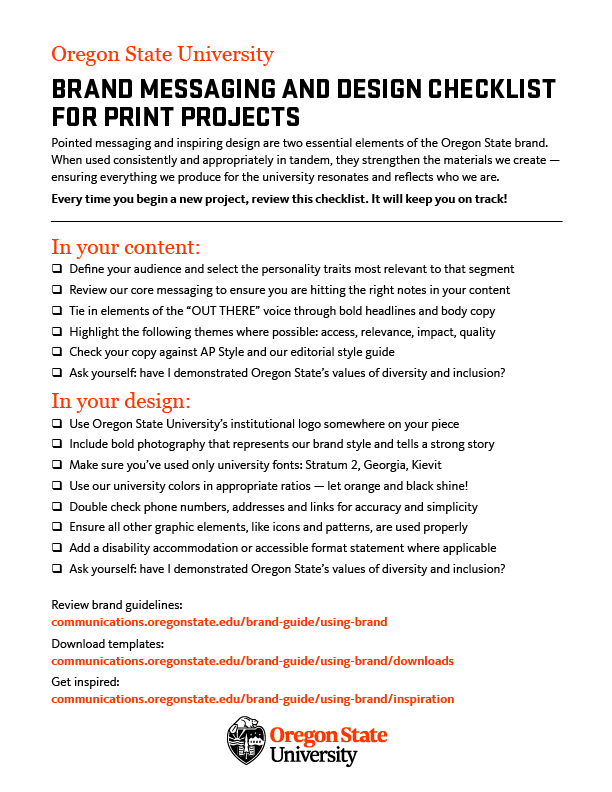One of our greatest assets at Oregon State is our primary color. Beaver Orange is vibrant, distinct and provides a solid base for the larger color palette. Through the years we have worked to present a consistent color no matter the channel or medium you are working with. In conjunction with the Oregon State logo, this is the best way to present a unified visual identity to the marketplace.
To do this we provide different color builds for various uses.
- Pantone 1665 for print jobs here on campus, through Printing and Mailing Services.
- CMYK for off-set print jobs done through an outside vendor (bid through Printing and Mailing Services).
- RGB for digital signage, presentations and as a fall back for less advanced design software (word, powerpoint, etc…)
- Hex is used only for websites, applications and mobile applications.
This guide applies to our entire color palette. If you ever have a question don’t be afraid to toss it out to the OSU Communicators slack community or email University Marketing directly.
You can find our color palette in the OSU Brand Guide.
Update to RGB and Hex
Since the launch of our updated color palette, in April of 2017, we have lived with a very narrow scope for how we are able to use Beaver Orange on websites. Because we strive (and are required) to meet WCAG AA guidelines for accessibility we were unable to use orange and white together for text/background colors.
This greatly limited our creative and design staff across the university. To address this we made a very slight tweak to the Hex of Beaver Orange. Visually the change is nearly imperceptible but provides enough contrast to use orange, white and black combinations. For centrally administered web properties (through Web and Mobile Services) the colors have been updated automatically. We have been working with our decentralized partners to make sure they have anything needed to adjust to this change. If you need assistance or have questions please connect with Kegan Sims on Slack or by contacting University Marketing via email.
As a result of the update to the Hex, it made sense to update RGB as well. RGB is primarily used for material displayed digitally (signboards, email, presentations, etc..) but also in print if you are using basic programs such as Microsoft Word or Powerpoint for design. On rare occasions, graphics made using RGB colors end up on websites. In order to maintain as much consistency as possible, both the Hex and RGB were tweaked together. These changes are subtle and we don’t expect you to rush out and update your materials. As you update content or create new versions of your digital collateral that is a good time to make a change.



